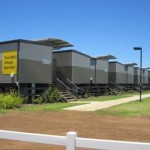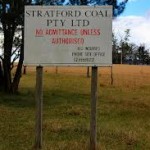What is the Trans-Pacific Partnership (the TPP)?
The Trans-Pacific Partnership (TPP) is a the most important trade agreement you’ve never heard of. The TPP involves 12 countries representing approximately 40 per cent of global GDP coming to an binding agreement in areas of intellectual property, foreign investment and capital movements, state owned enterprises, market access in goods, rules and specific rules of origin, textiles, sanitary standards, the environment, international law, financial services, agriculture, and Information Technology.[i]
Which countries are involved?
The original signatories to the TPP were Brunei, Chile, New Zealand and Singapore in 2005. Between 2008 and 2013 Australia, the US, Peru, Vietnam, Malaysia, Mexico, Canada and Japan have become members, and in 2013 Taiwan and South Korea expressed interest in joining the treaty. Canada’s membership was initially blocked by the US and New Zealand due to concern over both intellectual property rights protection and their agricultural policy with concern to dairy.
What is a trade agreement?
Trade agreements are generally intended to help resolve trade disputes, provide consistent rules and generally to encourage freer movement of goods and services, money and people, what economists refer to as factors of production.
Why do economists think free trade is a good thing?
Economists think that making it easier to move factors of production between countries makes us all better off and can lead to higher rates of economic growth, decrease the cost of goods and services and increased choices for consumers. Economists think that by removing restrictions on trade, the factors of production will move to where things can be made at least cost, allowing resources to be used most efficiently. For example, if it takes less money and labour to produce cars in China than Australia, economists think that from a global perspective, the world is better off if China produces cars and Australia produces something else, such as higher education.
Following World War II, free trade was also seen as a potential tool to reduce the likelihood of armed conflict in the future by forging closer economic relationships between countries.[i]
To remove restrictions on trade, attention is typically paid to what are known as tariff and non-tariff barriers. Tariff barriers are simply a tax that is imposed on imported goods by a particular country. For example, to protect domestic car manufacturers, Malaysia imposes very high tariffs on imported cars.
Non-tariff barriers are, as the name suggests, all other barriers to trade that aren’t tariffs. Australia is often accused of maintaining non-tariff barriers to fruit and vegetable imports by imposing strict quarantine rules.
Globally, tariffs are usually minimised by the existence of bilateral and multilateral free trade agreements between countries, however non-tariff trade barriers have persisted and have proven more contentious.
TPP arise due to non-tariff barriers to trade
Although the TPP aims to reduce remaining tariff barriers, the bulk of the agreement, and the cause of controversy, are measures aimed at reducing non-tariff trade barriers.
In particular, the TPP has a strong focus on intellectual property and digital copyright issues .
Controversies surrounding the TPP
The TPP agreement has attracted controversy for several key reasons, most pertaining to the potential for reduced sovereignty of participating countries.
Domestic law must be congruent with the TPP
Under the TPP a company would have the right under international law to sue the federal government when domestic laws are not congruent with the company’s rights under the treaty.
This is currently being experienced in Australia in regards to the 1993 Agreement between the Government of Australia and the Government of Hong Kong for the Promotion and Protection of Investments; whereby the tobacco company Philip Morris is suing the Australian government for the damage to their tobacco investments that was done as a result of its Tobacco Plain Packaging Act of 2011.[i] The issues surrounding this are mainly concerned with sovereignty and the fact that the Tobacco Plain Packaging Act of 2011 was passed with bipartisan parliamentary support, and following the tobacco companies losing their High Court claim for compensation.[ii]
Intellectual property implications for healthcare
The TPP has a heavy emphasis on the protection of intellectual property. This has been viewed by some parties, including Médecins Sans Frontières, as excessively restrictive and there is significant and widespread concern about the impact the TPP would have on the access to affordable pharmaceutical medication.
This may also impact the Australian Pharmaceutical Benefits Scheme (PBS), which keeps the cost of medicines in Australian pharmacies low. During 2011,, the United States (US) proposed an annex to the section of the TPP on transparency which focussed specifically on programs and companies that subsidise medicines. Reports at the time indicate that this proposal was rejected by other TPP member countries, however that it resurged under an insignificantly different proposal during later negotiations. The annex eliminates the use of the pricing mechanism used by the PBS to maintain lower pharmaceutical prices, It has been suggested that this is an attempt to extend patent monopolies owned by large US pharmaceutical companies.[iii] Under the previously discussed investor-state arbitration, foreign companies would be able to sue the Australian government if they felt their profits were being impaired by this government scheme.[iv]
Intellectual property implications for the digital economy
Groups such as the Australian Digital Alliance (ADA) and Public Knowledge have raised concerns about the impacts of the TPP on the digital economy. The ADA has claimed the TPP is “Overly prescriptive and technical” and will “reduce our domestic flexibility and leave us with little room to negotiate in future international agreements”[vi].
Public Knowledge, a US-based organisation, has even gone so far as to set up a website, www.tppinfo.org as a resource about the TPP and copyright. Public Knowledge sums up its concerns about the TPP as follows:
Excessive copyright rights and enforcement adversely affect that ability of creators to create content, the ability of technology companies to make innovative products, and that ability of users to use content in new ways.
Source: http://www.tppinfo.org/
Reducing restrictions on the movement of capital between countries
The TPP aims to contribute to major reductions of barriers restricting global movements of capital. This is a point on which the US have been thus far considerably inflexible[v], and for example in the case of Chile and Malaysia, while both countries have taken steps to protect regulation on their capital accounts, the proposal put forward by the US would provide a significant challenge for these countries to regulate cross border finance.[vi]
The moderation of global financial trade barriers facilitates the movement of production internationally, which has concerns associated with it regarding minimum wage laws and standards and their evasion, environmental protection standards and workplace safety regulations.[vii]
Secrecy and a lack of public or civil society consultation
The most consistent criticism of the TPP is the way in which the detail of negotiations has remained undisclosed to the public for debate or scrutiny. The convenor of the Australian Fair Trade and Investment Network Patricia Ranald claiming the Australian public has been left out of the debate.
“Trade agreements shouldn’t tie the hands of government, prevent them from regulating in the public interest. And they shouldn’t be making agreements which require Australia to change its domestic law about things like medicine or copyright, which is done in secrecy when these things should normally be decided through an open, democratic, parliamentary process. Domestic law should not be decided in secret negotiations in a trade agreement.”[viii]
What are the implications of the TPP for Australia?
The Australian Department of Foreign Affairs and Trade (DFAT) have, in their official report, a list of anticipated benefits for Australians as a result of engagement with the TPP. These benefits include:
- “The potential to form a building block for Asia-Pacific regional economic integration
- Regional rules of origin providing new opportunities for Australian exporters to tap into global supply chains
- Potential for providing additional market access for goods and services into the markets of existing FTA and TPP partners
- Potential for improved opportunities for Australian financial services providers by mitigating barriers such as foreign restrictions on capital and investment flows
- Provision of a framework for engaging with countries with which we do not have an existing bilateral trade agreement; for example there is potential for better access for dairy products and mining services to Peru through the TPP.”[i]
DFAT claims that “Australia’s decision to participate in the TPP in 2008 followed an extensive public consultation process. Overall, there was widespread interest in and support for Australia’s participation in the TPP”.[ii] No statistical information or data could be found to support this statement. Indeed, a survey conducted by the Australia Institute in 2013 revealed that Australians are mostly unaware of the TPP and remained sceptical about the claimed benefits. The survey showed that
- Only 11 per cent of respondents said that they ‘definitely know’ about the TPP.
- 85% of people surveyed thought Australia should set the standards for the quality of goods sold in Australia
- 73% of people surveyed thought Australia would benefit from stronger regulation of the quality of what can be imported into Australia
- 50% of people surveyed thought Free Trade Agreements between Australia and other countries were likely to reduce choice of locally produced products
- 52% of people surveyed thought Free Trade Agreements between Australia and other countries were likely to have a negative impact on jobs in Australia
- 40% of people surveyed didn’t think Free Trade Agreements between Australia and other countries were likely to improve human rights, labour rights and environmental standards around the world
- 87% of people surveyed thought the details of Free Trade Agreement should be made public before the Australian Government signs them
67% of people surveyed voted ‘no’ when asked whether they trusted the government on their promise that Free Trade Agreements will not increase the cost of specific goods such as prescription medicine
Implications for Australian Consumers
The Australian consumer representative group CHOICE has outlined concerns for Australian consumers under the TPP.
The biggest issues in discussion are those of banning parallel imports – the importing of authentic goods that are imported without the permission of the intellectual property right holder and banning the evasion of geoblocks that prevent consumers viewing and downloading material based on their geographic location.
Parallel imports and the evasion of geoblocks both allow consumers to buy products where they are cheapest – hands up if you have ever bought any electronic products through eBay from an international seller in Hong Kong. So banning these things is inherently bad for consumers.
Implications for Australian Industries
Because of the secrecy involving the TPP, it is very difficult to get a clear picture about the impacts on particular industries.
As the particulars of the TPP have not been made public, speculation on the implications of the completed negotiation can only extend so far. There have been leaks of documents, however, exposed by WikiLeaks, and these have raised concerns for the Australian pharmaceutical, entertainment, information technology and intellectual property industries.[iii]
Australia’s agricultural industry is likely to benefit from any reduction in trade protection. Jennifer Westacott, Chief Executive for the Business Council of Australia stated that, for example in respect to the recent free trade agreement concerning South Korea, Australian farmers will experience an elimination of tariffs on 98 per cent of Australian exports to Korea.[iv] While not referring explicitly to the TPP here, there are expected benefits for Australia’s largest exporting industries. The National Farmers Federation of Australia and New Zealand similarly noted the benefits of a free trade agreement with China, articulating expected benefits for the Australian agriculture, food, manufacturing and mining industries.[v]
Final thoughts
The Trans-Pacific Partnership (TPP) is understandable contentious. Despite the far reaching ramifications of any final agreement between participating countries, negotiations for the TPP have taken place amid great secrecy.
While free trade is generally supported by economists, the TPP is unique in that it is focusing heavily on so called non-tariff barriers to trade. When these barriers are examined in more detail, they appear to be attempting to fix issues faced by producers in a globally connected economy. In this way, the TPP is not so much concerned with reducing barriers to trade, but rather with fixing problems created by overly free trade. The net impact of this is likely to be that individuals, consumers and smaller businesses are likely to be worse off. Companies that have the resources to enforce global intellectual property rights under the agreement will be the primary beneficiaries.
Certain industries in Australia, Agricultural primary producers for example, are likely to benefit from any reductions in tariffs among participating countries. But it is equally likely that other industries will be adversely affected by changes to tariff and non-tariff barriers. Industries likely to be affected by changes to intellectual property laws such as healthcare and digital economy companies (ISPs, content producers and distributors etc.) may be most at risk.
It is difficult at this time to assess the impacts on the Australian economy in more detail than this. We hope this post is a useful starting point for further and more detailed research.
Bibliography
Office of the United States Trade Representative, 2011 “The United States in the Trans Pacific Partnership” retrieved March 2014 http://www.ustr.gov/about-us/press-office/fact-sheets/2011/november/united-states-trans-pacific-partnership
Australian Government Department of Foreign Affairs and Trade, 2012 “Trans Pacific Partnership Agreement Negotiations” retrieved March 2014 http://www.ustr.gov/about-us/press-office/fact-sheets/2011/november/united-states-trans-pacific-partnership
New Zealand Ministry of Foreign Affairs and Trade, 2005 “Trans Pacific Strategy Economic Partnership Agreement” retrieved March 2014 http://www.mfat.govt.nz/downloads/trade-agreement/transpacific/main-agreement.pdf
Australian Government Attorney Generals Department, “Investor-state arbitration- tobacco plain packaging” retrieved March 2014 http://www.ag.gov.au/internationalrelations/internationallaw/pages/tobaccoplainpackaging.aspx
The Australia Institute, 2013, “MR: Aussies in the dark about risky TPP trade deal” retrieved March 2014 http://www.tai.org.au/content/mr-aussies-dark-about-risky-tpp-trade-deal
The Australia Institute, 2014 “MR: Consumers likely to lose out if Australia signs secretive trade deal” retrieved March 2014 http://www.tai.org.au/content/mr-consumers-likely-lose-out-if-australia-signs-secretive-trade-deal
EconomixComix, “The Trans Pacific Partnership and Free Trade” retrieved from http://economixcomix.com/home/tpp/
Amon, I 2013 “How would the TPP agreement affect Australia?” SBS World News Radio retrieved March 2014 http://www.sbs.com.au/news/article/2013/12/23/how-would-tpp-agreement-affect-australians
Public Knowledge, “Timeline of the Trans Pacific Partnership” retrieved March 2014 http://tppinfo.org/resources/tpp-timeline/
Hay A, Gomez E, 2013 “Australia: Agribusiness aspects of the Trans Pacific Partnership negotiations” Mondaq retrieved March 2014 http://www.mondaq.com/australia/x/274580/international+trade+investment/Agribusiness+aspects+of+the+TransPacific+Partnership+negotiations
Dorling, P 2013, “Australians may pay the price in Trans Pacific Partnership free trade agreement” The Sydney Morning Herald retrieved March 2014 http://www.smh.com.au/federal-politics/political-news/australians-may-pay-the-price-in-transpacific-partnership-free-trade-agreement-20131113-2xh0m.html
Kelsey, J 2012 “Thailand’s quest to join the TPPA will strengthen opposition” Scoop Independent News retrieved March 2014 http://www.scoop.co.nz/stories/WO1211/S00295/thailands-quest-to-join-the-tppa-will-strengthen-opposition.htm
NOTE: Some of these reference numbers are a bit messed up after bring things in from Word. If any readers have a question about sources just put it in the comments and we’ll try to clear it up.
[i] “The 10 benefits of the WTO trading system” World Trade Organisation http://www.wto.org/english/res_e/doload_e/10b_e.pdf
[i] “TPP state of play after Salt Lake City 19-24 November 2013 round of negotiations” WikiLeaks https://wikileaks.org/IMG/pdf/tpp-salt-lake-extracts-.pdf
[i] “Investor-state arbitration- tobacco plain packaging” Australian Government Attorney-Generals department http://www.ag.gov.au/internationalrelations/internationallaw/pages/tobaccoplainpackaging.aspx
[ii] “Aussies in the dark about risky TPP trade deal” The Australia Institute http://www.tai.org.au/content/mr-aussies-dark-about-risky-tpp-trade-deal
[iii] “The TPP negotiations could be a bitter pill to swallow for Australians” The Guardian http://www.theguardian.com/commentisfree/2013/dec/06/the-tpp-negotiations-could-be-a-bitter-pill-to-swallow-for-australians
[iv] “Consumers likely to lose out if Australia signs secretive trade deal” The Australia Institute http://www.tai.org.au/content/mr-consumers-likely-lose-out-if-australia-signs-secretive-trade-deal
[iv] “FTA wih Korea Important for Australia’s Trade Agenda: Article in Business Spectator” Business Council of Australia, http://www.bca.com.au/newsroom/fta-with-korea-important-for-australias-trade-agenda-article-in-business-spectator
[v] “China FTA: A good deal is essential” National Farmers Federation http://www.nff.org.au/read/4437/china-fta-good-deal-essential.html
[v] “TPP state of play after Salt Lake City 19-24 November 2013 round of negotiations” WikiLeaks https://wikileaks.org/IMG/pdf/tpp-salt-lake-extracts-.pdf
[vi] “Financial stability and the Trans-Pacific Partnership: Lessons from Chile and Malaysia” Boston University, Global Economic Governance Initiative http://www.bu.edu/pardee/files/2013/09/Working-Paper-October-13.pdf
Australian Digital Alliance, 2014, http://digital.org.au/content/trapped-detail-australia-copyright-and-tpp
[vii] “The Trans Pacific Partnership and Free Trade” http://economixcomix.com/home/tpp/
[viii] “How would the TPP Agreement affect Australia?” SBS http://www.sbs.com.au/news/article/2013/12/23/how-would-tpp-agreement-affect-australians










